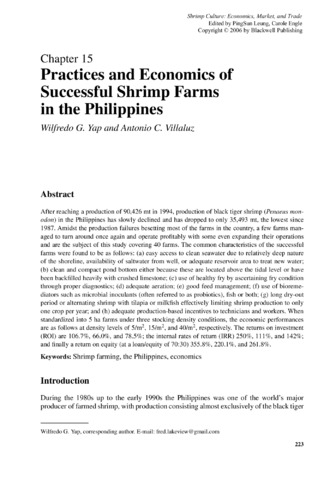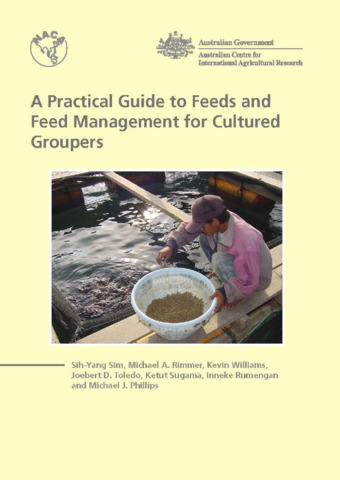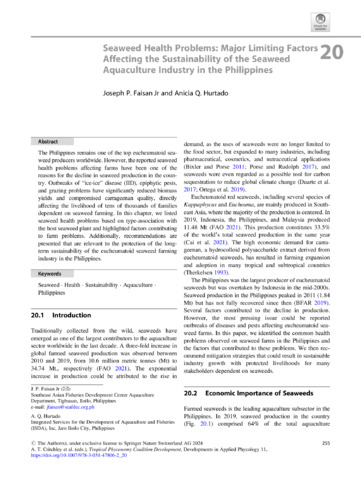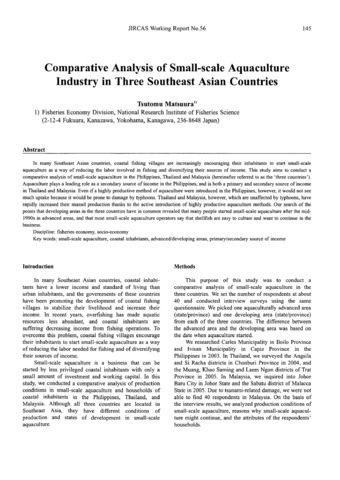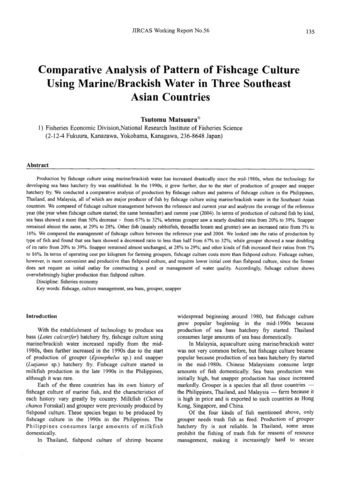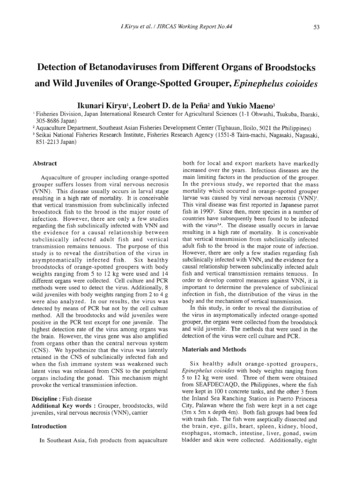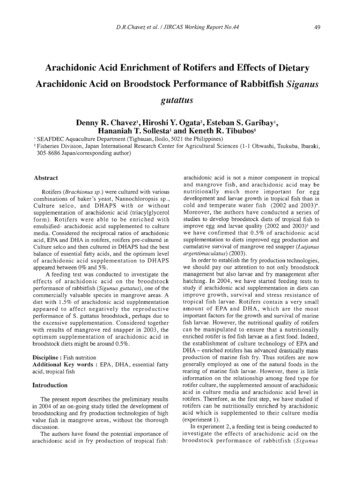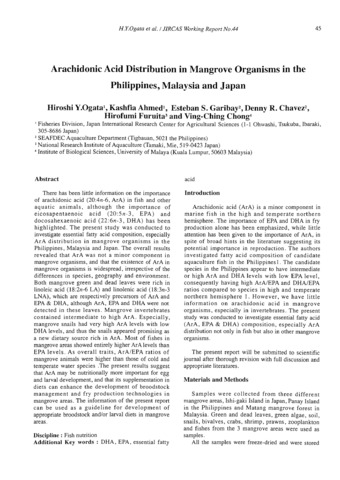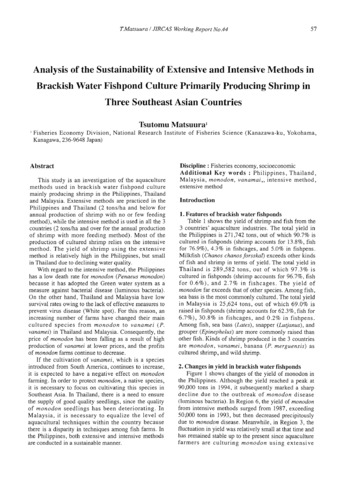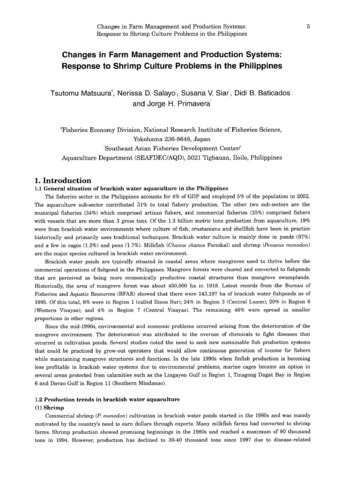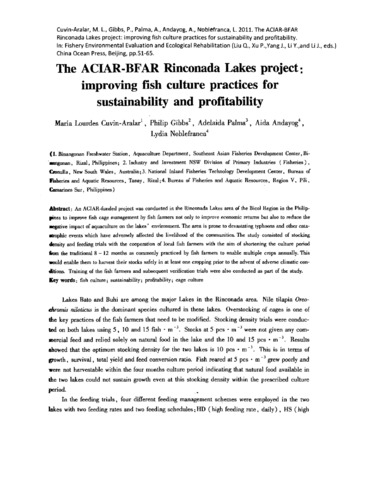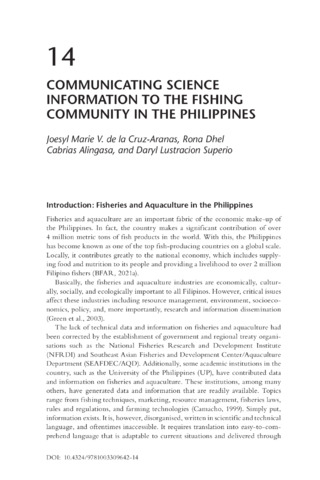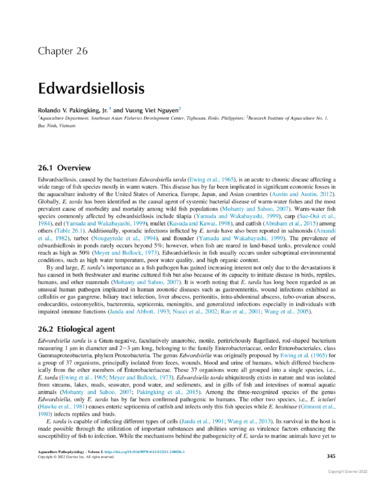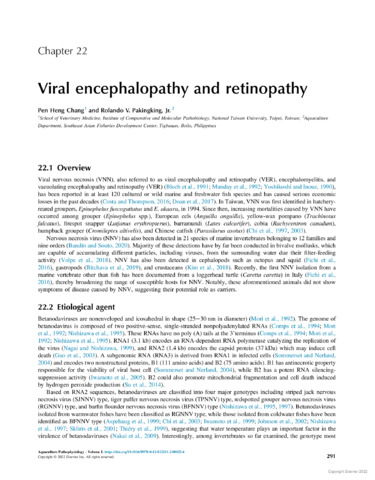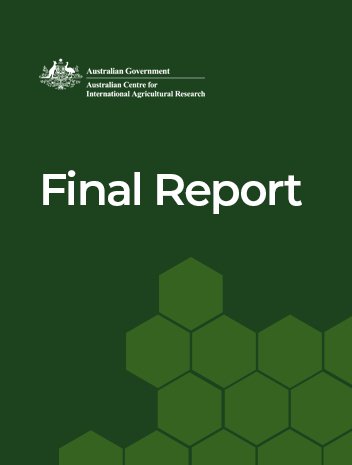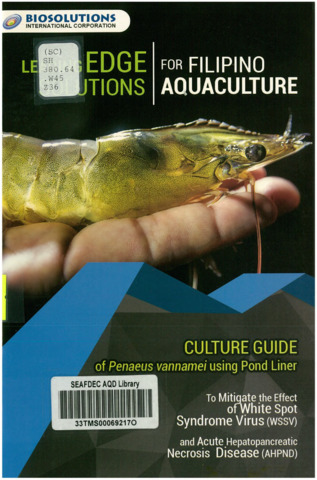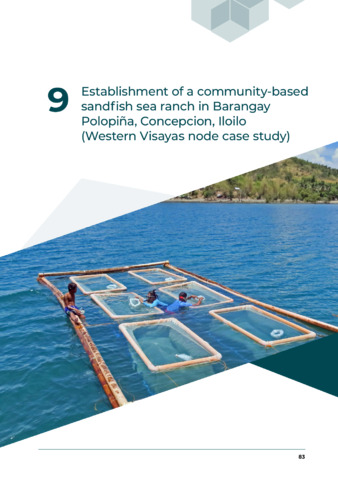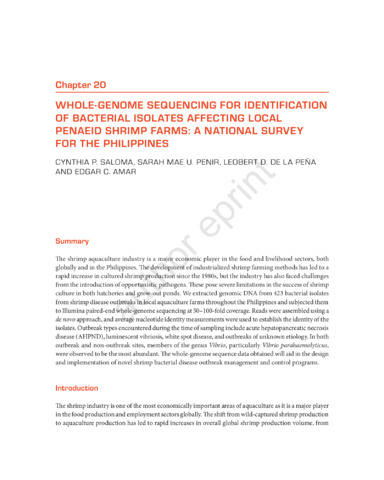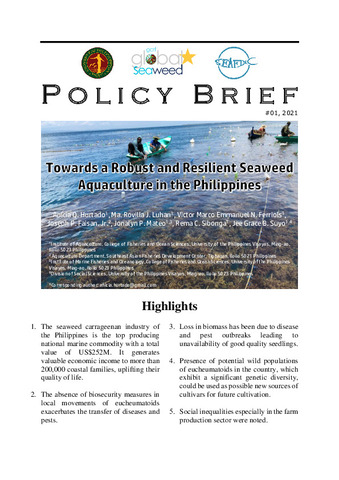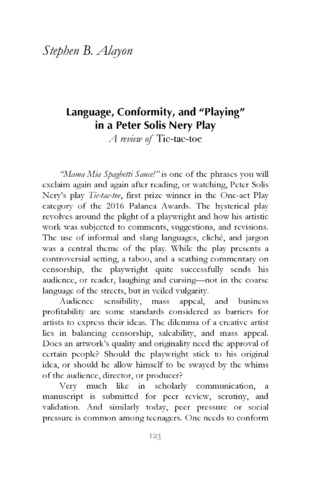AQD Books and Book Chapters
Browse by
Recent Submissions
-
Practices and economics of successful shrimp farms in the Philippines
(Wiley, 2006)After reaching a production of 90,426 mt in 1994, production of black tiger shrimp (Penaeus monodon) in the Philippines has slowly declined and has dropped to only 35,493 mt, the lowest since 1987. Amidst the ... -
A practical guide to feeds and feed management for cultured groupers
(Network of Aquaculture Centres in Asia-Pacific, 2005)Farming of groupers (members of the Serranidae, subfamily Epinephelinae) is widely practiced in Asia. Groupers are carnivorous and consequently prefer feeds high in fish protein. Most farms in Asia still rely on what is ... -
Seaweed health problems: Major limiting factors affecting the sustainability of the seaweed aquaculture industry in the Philippines
(Springer International Publishing, 2024)The Philippines remains one of the top eucheumatoid seaweed producers worldwide. However, the reported seaweed health problems affecting farms have been one of the reasons for the decline in seaweed production in the ... -
Comparative analysis of small-scale aquaculture industry in three Southeast Asian countries
(Japan International Research Center for Agricultural Sciences, 2007)In many Southeast Asian countries, coastal fishing villages are increasingly encouraging their inhabitants to start small-scale aquaculture as a way of reducing the labor involved in fishing and diversifying their sources ... -
Comparative analysis of pattern of fishcage culture using marine/brackish water in three Southeast Asian countries
(Japan International Research Center for Agricultural Sciences, 2007)Production by fishcage culture using marine/brackish water has increased drastically since the mid-1980s, when the technology for developing sea bass hatchery fry was established. In the 1990s, it grew further, due to the ... -
Detection of betanodaviruses from different organs of broodstocks and wild juveniles of orange-spotted grouper, Epinephelus coioides
(Japan International Research Center for Agricultural Sciences, 2006)Aquaculture of grouper including orange-spotted grouper suffers losses from viral nervous necrosis (VNN). This disease usually occurs in larval stage resulting in a high rate of mortality. It is conceivable that vertical ... -
Arachidonic acid enrichment of rotifers and effects of dietary arachidonic acid on broodstock performance of rabbitfish Siganus guttatus
(Japan International Research Center for Agricultural Sciences, 2006)Rotifers (Brachionus sp.) were cultured with various combinations of baker’s yeast, Nannochloropsis sp., Culture selco, and DHAPS with or without supplementation of arachidonic acid (triacylglycerol form). Rotifers were ... -
Arachidonic acid distribution in mangrove organisms in the Philippines, Malaysia and Japan
(Japan International Research Center for Agricultural Sciences, 2006)There has been little information on the importance of arachidonic acid (20:4n-6, ArA) in fish and other aquatic animals, although the importance of eicosapentaenoic acid (20:5n-3, EPA) and docosahexaenoic acid (22:6n-3, ... -
Analysis of the sustainability of extensive and intensive methods in brackish water fishpond culture primarily producing shrimp in three Southeast Asian countries
(Japan International Research Center for Agricultural Sciences, 2006)This study is an investigation of the aquaculture methods used in brackish water fishpond culture mainly producing shrimp in the Philippines, Thailand and Malaysia. Extensive methods are practiced in the Philippines and ... -
Changes in farm management and production systems: Response to shrimp culture problems in the Philippines
(Japan International Research Center for Agricultural Sciences, 2007) -
The ACIAR-BFAR Rinconada Lakes project: Improving fish culture practices for sustainability and profitability
(Ocean Press, 2011)An ACIAR-funded project was conducted in the Rinconada Lakes area of the Bicol Region in the Philippines to improve fish cage management by fish farmers not only to improve economic returns but also to reduce the negative ... -
Communicating science information to the fishing community in the Philippines
(Taylor and Francis, 2022-11-10)The world is currently experiencing an age of information overload, as information about anything and almost everything is easily obtainable. However, essential information that could help a community strive and survive ... -
Edwardsiellosis
(Academic Press, 2022)Edwardsiellosis is an acute to chronic systemic disease in fish characterized by exophthalmia, ascites, hernia, and severe lesions of the internal organs. It is caused by Edwardsiella tarda, a Gram-negative intracellular ... -
Viral encephalopathy and retinopathy
(Academic Press, 2022)Viral nervous necrosis (VNN), also referred to as viral encephalopathy and retinopathy (VER), has been reported in at least 120 cultured or wild marine and freshwater fish species and has caused serious economic losses ... -
Developing technologies for giant grouper (Epinephelus lanceolatus) aquaculture in Vietnam, the Philippines and Australia
(Australian Centre for International Agricultural Research, 2021-06-29)This project established a sustainable aquaculture industry for giant grouper in Vietnam and the Philippines through the development of captive breeding and larval-rearing techniques. Captive breeding innovations and ... -
Culture guide of Penaeus vannamei using pond liner to mitigate the effects of white spot syndrome virus (WSSV) and acute hepatopancreatic necrosis disease (AHPND)
(Biosolutions International Corporation, 2016)This manual aims to share the methodologies leading to the success of shrimp farming operations. It is a work in progress to be regularly updated as new techniques are developed to deal with future challenges and diseases ... -
Establishment of a community-based sandfish sea ranch in Barangay Polopiña, Concepcion, Iloilo (Western Visayas node case study)
(Australian Centre for International Agricultural Research, 2022) -
Whole-genome sequencing for identification of bacterial isolates affecting local penaeid shrimp farms: A national survey for the Philippines
(5M Books Ltd, 2022)The shrimp aquaculture industry is a major economic player in the food and livelihood sectors, both globally and in the Philippines. The development of industrialized shrimp farming methods has led to a rapid increase in ... -
Towards a robust and resilient seaweed aquaculture in the Philippines
(GlobalSeaweedSTAR Philippines, 2021)The aim of this national policy brief is to highlight the current challenges facing the seaweed industry of the Philippines based on robust, scientifically proven results from the UK Research and Innovation funded ... -
Language, conformity, and "playing" in a Peter Solis Nery play: A review of tic-tac-toe
(Peter Solis Nery, 2020)

